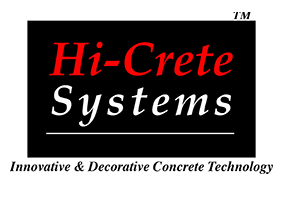
PU Flooring vs. Epoxy Flooring: Choosing the Right Option for Your Needs.
When it comes to durable and attractive floor coverings, both PU (polyurethane) and epoxy flooring have become popular choices. However, with distinct characteristics, selecting the ideal option for your project requires careful consideration. This comprehensive guide delves into the key differences between PU and epoxy flooring, empowering you to make an informed decision.
Understanding the Fundamentals
PU Flooring: PU flooring is a versatile coating system created by combining polyurethane resins with hardeners. It offers a flexible and resilient surface, making it well-suited for high-traffic areas. PU’s inherent elasticity allows it to absorb impact, minimizing scratches and scuffs – a valuable advantage in spaces with frequent movement of furniture or equipment.
Epoxy Flooring: On the other hand, epoxy flooring boasts exceptional hardness and chemical resistance. Composed of epoxy resins and hardeners, it forms a rigid, non-porous surface ideal for heavy-duty applications. Epoxy’s superior strength makes it a prime choice for warehouses, industrial facilities, and garages that endure significant wear and tear.
Delving Deeper: Key Considerations
Durability and Hardness:
PU Flooring: PU flooring provides a good balance between flexibility and strength. While not as hard as epoxy, it effectively withstands moderate foot traffic and impact. However, for areas experiencing heavy machinery or constant abrasion, epoxy’s superior hardness might be a better fit.
Epoxy Flooring: Epoxy reigns supreme in terms of sheer durability. Its exceptional hardness makes it virtually impervious to scratches, gouges, and heavy loads. This characteristic makes epoxy flooring the preferred choice for environments with intense activity or potential chemical spills.
Chemical Resistance:
PU Flooring: PU flooring exhibits good resistance to a range of chemicals, including mild acids and alkalis. However, in environments with frequent exposure to harsh chemicals or solvents, epoxy might be a more suitable option.
Epoxy Flooring: Epoxy flooring excels in chemical resistance. Its non-porous, tightly bonded surface effectively repels and protects against most chemicals commonly encountered in industrial settings. This resistance offers significant advantages in areas like laboratories, chemical processing plants, and workshops.
Flexibility and Impact Absorption:
PU Flooring: PU flooring shines in terms of flexibility. Its inherent elasticity allows it to absorb impact and bounce back from minor scratches or dents. This characteristic minimizes surface damage, making PU flooring a good choice for areas with frequent movement or the potential for dropped objects.
Epoxy Flooring: Due to its rigid nature, epoxy flooring offers less flexibility and impact absorption compared to PU. While still reasonably durable, it might be more prone to cracking under heavy impact or extreme temperature fluctuations.
Moisture Sensitivity:
PU Flooring: PU flooring displays some sensitivity to moisture during installation. Improper moisture control in the subfloor can lead to adhesion issues and bubbles in the final finish. Consulting with a professional flooring contractor like Hi-Crete Decorative Systems Pvt. Ltd. in Pune, India (Contact: +91 91757 61991, Email: [email protected]) is crucial to ensure proper moisture mitigation and successful PU flooring installation.
Epoxy Flooring: Epoxy flooring is generally less sensitive to moisture compared to PU. However, it’s still essential to address any moisture concerns in the subfloor before installation to achieve optimal results.
Aesthetics and Customization:
PU Flooring: PU flooring offers a wide range of aesthetic possibilities. It can be formulated in various colors, and some PU systems even incorporate decorative chips or flakes for a unique visual appeal. This versatility allows for customization to complement the overall design of the space.
Epoxy Flooring: While typically available in solid colors, epoxy flooring can also be customized to a certain extent. Colored pigments or decorative quartz can be integrated into the epoxy system to create an aesthetically pleasing finish.
Curing Time and Installation:
PU Flooring: PU flooring generally cures faster than epoxy, allowing for quicker return to service of the finished area. However, PU’s faster curing time also means a shorter window for application, requiring experienced professionals like those at Hi-Crete Decorative Systems Pvt. Ltd. to ensure proper installation within the pot life of the material.
Epoxy Flooring: Epoxy flooring typically requires a longer curing time compared to PU. While this might lead to a slightly longer wait before the area can be used again, the extended curing period allows for a more thorough chemical reaction, ultimately resulting in a more robust and durable finished product.
Maintenance and Upkeep:
PU Flooring: PU flooring is relatively easy to maintain. Regular sweeping, mopping with a mild detergent solution, and occasional deep cleaning are sufficient to keep the surface looking its best.
Epoxy Flooring: Epoxy flooring also requires minimal maintenance. Regular sweeping, mopping, and occasional deep cleaning will suffice. Due to its superior chemical resistance, epoxy flooring might require less.

